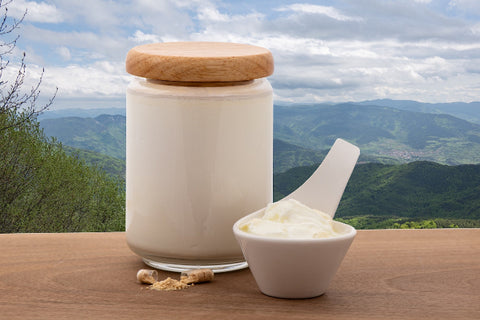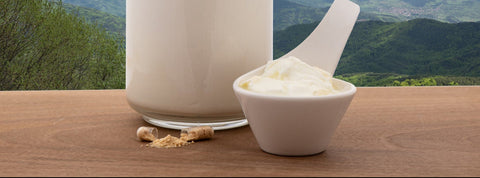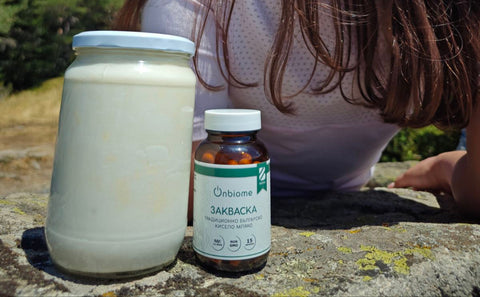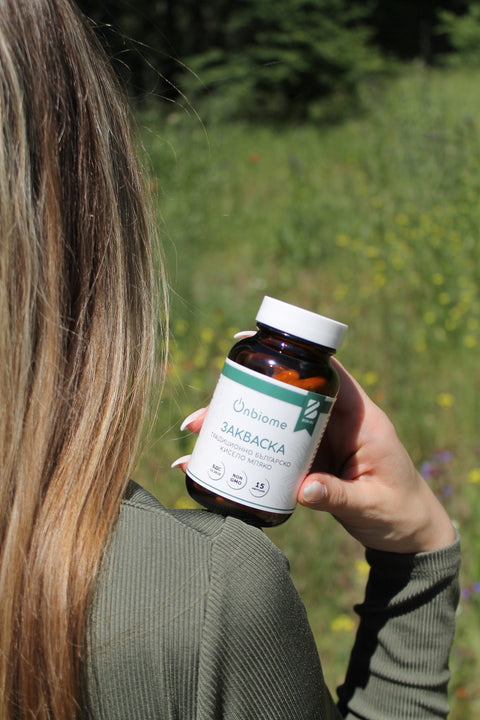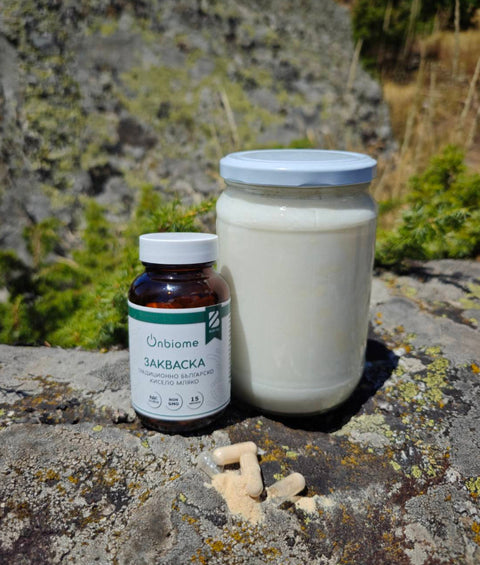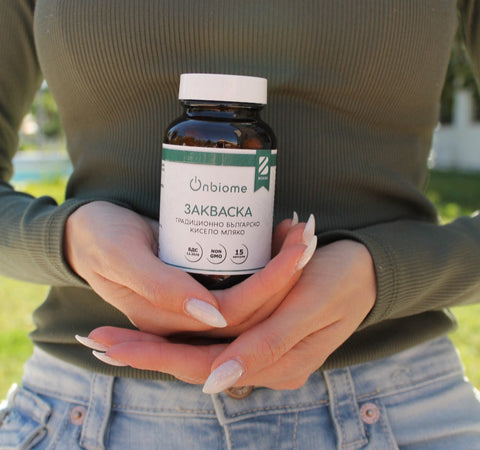With Onbiome, you can achieve master-level home fermentation, developing the authentic sensory characteristics of traditional Bulgarian yogurt. Each batch ensures the typical taste, rich aroma, and characteristic thickness that define this iconic Bulgarian product.
Preparation technology
- Strain the milk through a sieve into a suitable pot and place it on the stove until it boils. Once boiling, reduce the heat to a gentle simmer. Let the milk simmer for 20–30 minutes. Remove the required number of capsules from the refrigerator and let them reach room temperature.
- Pour a portion of the boiled milk into a jar with a lid and cool it in a water bath to 45 °C (113 °F). Use a cooking thermometer to measure the temperature accurately.
- Add the prepared starter culture from the capsules to the cooled milk in the amount needed for fermentation (one capsule per 1.5–2 liters of milk). Open the capsules and pour their contents into the jar - do not add the entire capsule as it dissolves poorly.
- Mix thoroughly until the starter is fully dissolved (usually 10–15 minutes).
- Warm the jars and lids to 45 °C and keep them warm until pouring.
- Cool the main quantity of milk (in a water bath) to 45 °C.
- Pour the pre-fermented milk from the jar into the main milk and mix thoroughly.
- Pour the milk into the warm jars and seal with lids.
- Let the milk ferment in the jars at 45 °C for 4–6 hours without stirring. To maintain the fermentation temperature, use a yogurt maker or an oven set to 45 °C / + - 1 °C.
- Remove the jars with now coagulated milk and leave them at room temperature (around 21 °C / 70 °F) for 2–3 hours.
- Store the jars in the refrigerator for 8 hours.
The quality of the finished yogurt depends on the quality of the fresh milk used. If the results are unsatisfactory, try using a different milk source.
Practical tips
You have followed the preparation method correctly, adapting it to your household, routine, and needs. You now have homemade traditional Bulgarian yogurt. For those who want to achieve a smoother texture or coagulate mixed types of milk, we offer a few practical tips:
For a smooth cream layer, remove the foam with a spoon after pouring the milk into jars (step 8).
If using pasteurized milk, simply heat it to 45 °C (113 °F); step 1 can be skipped. Follow the rest of the method exactly as described.
Be aware that fermentation continues for days and your yogurt will contain live bacteria for a long time, allowing it to be stored for several weeks. During this period, the acidity remains stable (pH 4.2–4.4).
If you don’t have a temperature-maintaining device (step 9), you can use the traditional “wrapping” method while extending coagulation to 8 hours. Use pre-warmed wool blankets. It is also suitable to place jars in a pre-warmed box or an insulated cooler bag.
Goat milk contains a different protein structure, so goat yogurt will be thinner. To thicken, up to 40% sheep’s milk can be added. If you prefer 100% goat milk, experiment by fermenting and coagulating at a slightly higher temperature (up to 49 °C / 120 °F) for a longer time (up to 6 hours).
Milk characteristics vary. The quality of milk as a base for yogurt depends heavily on the animal breed, their diet, and seasonal variations. This requires adaptability and minor adjustments to the preparation method when necessary.

